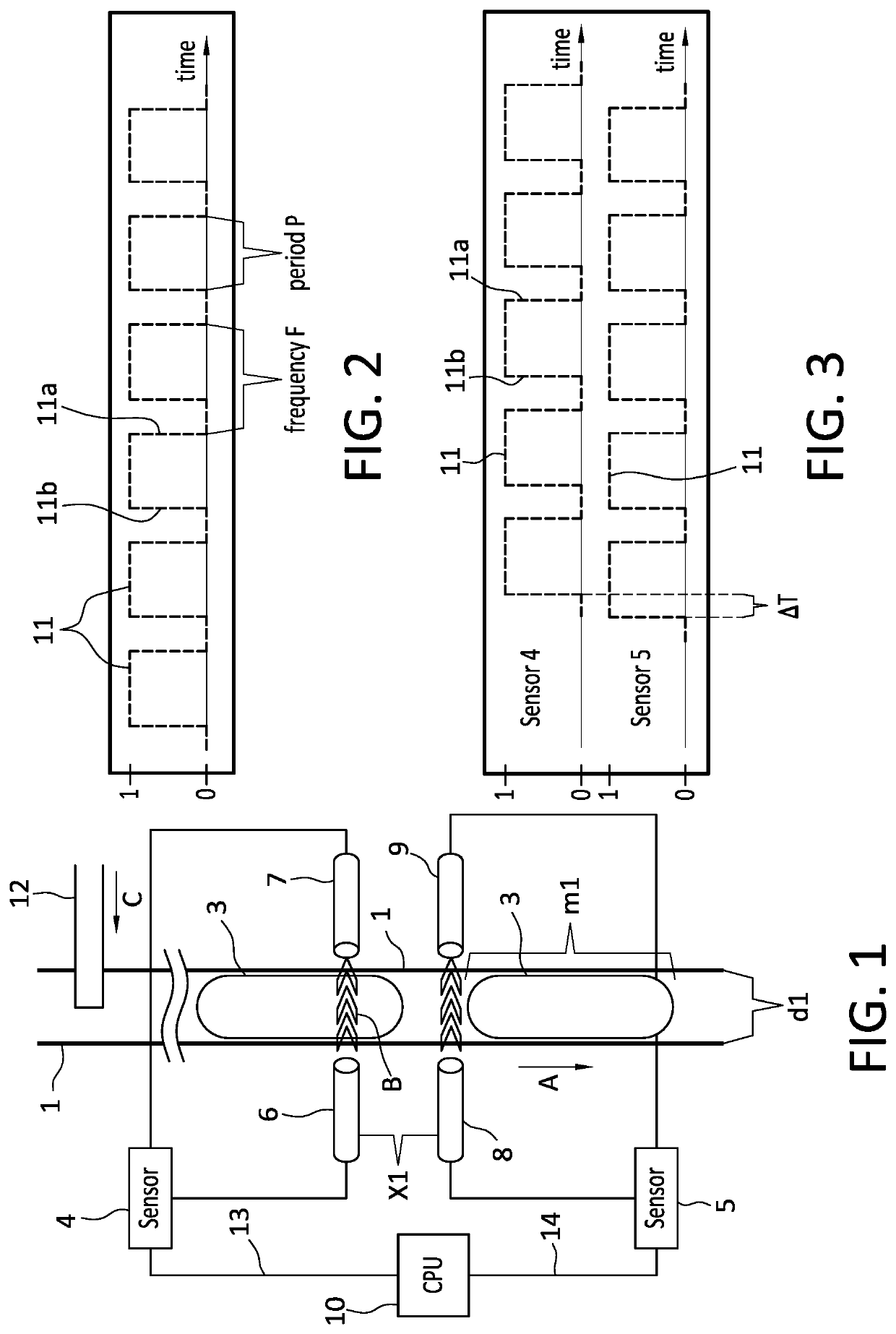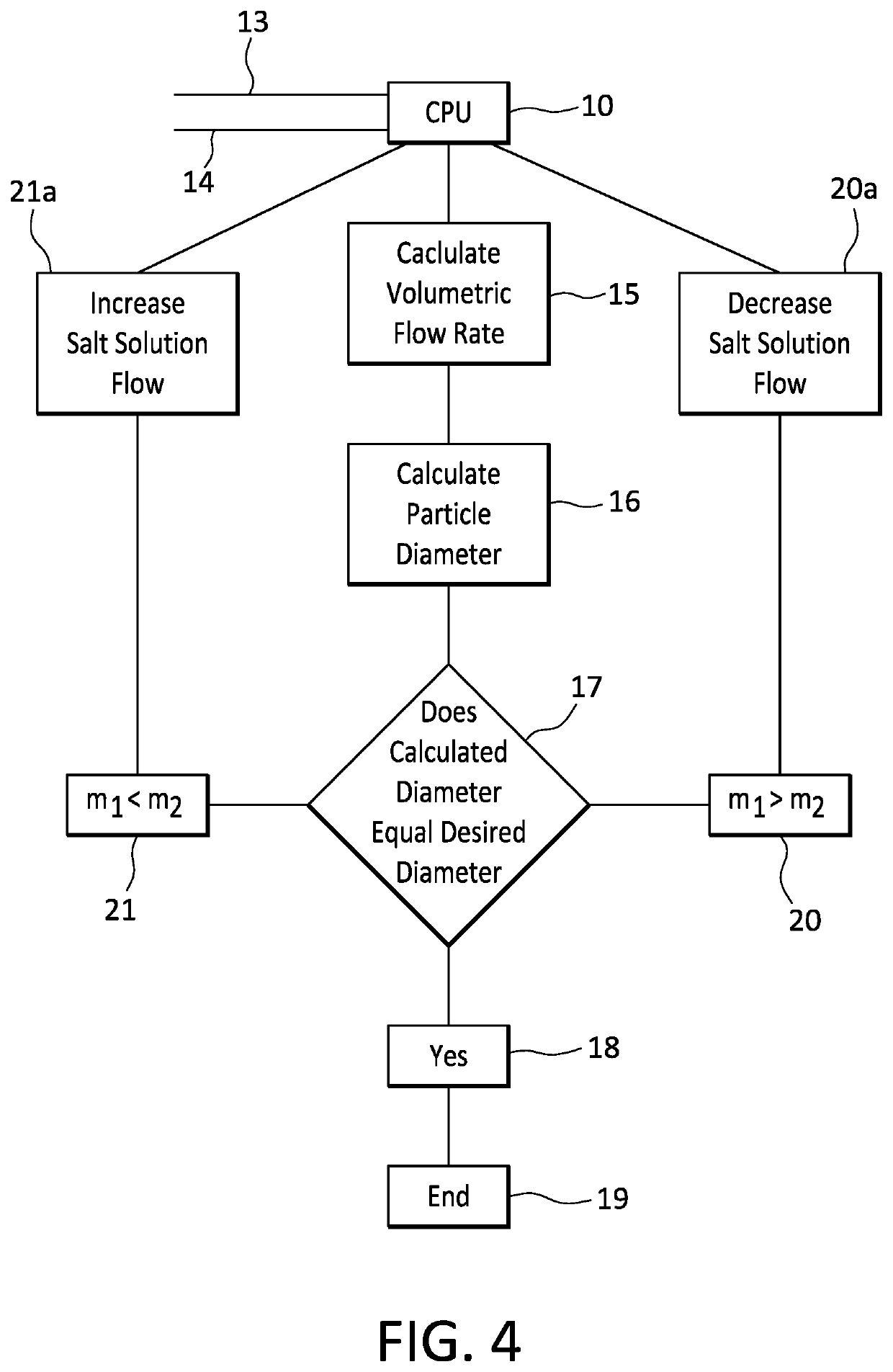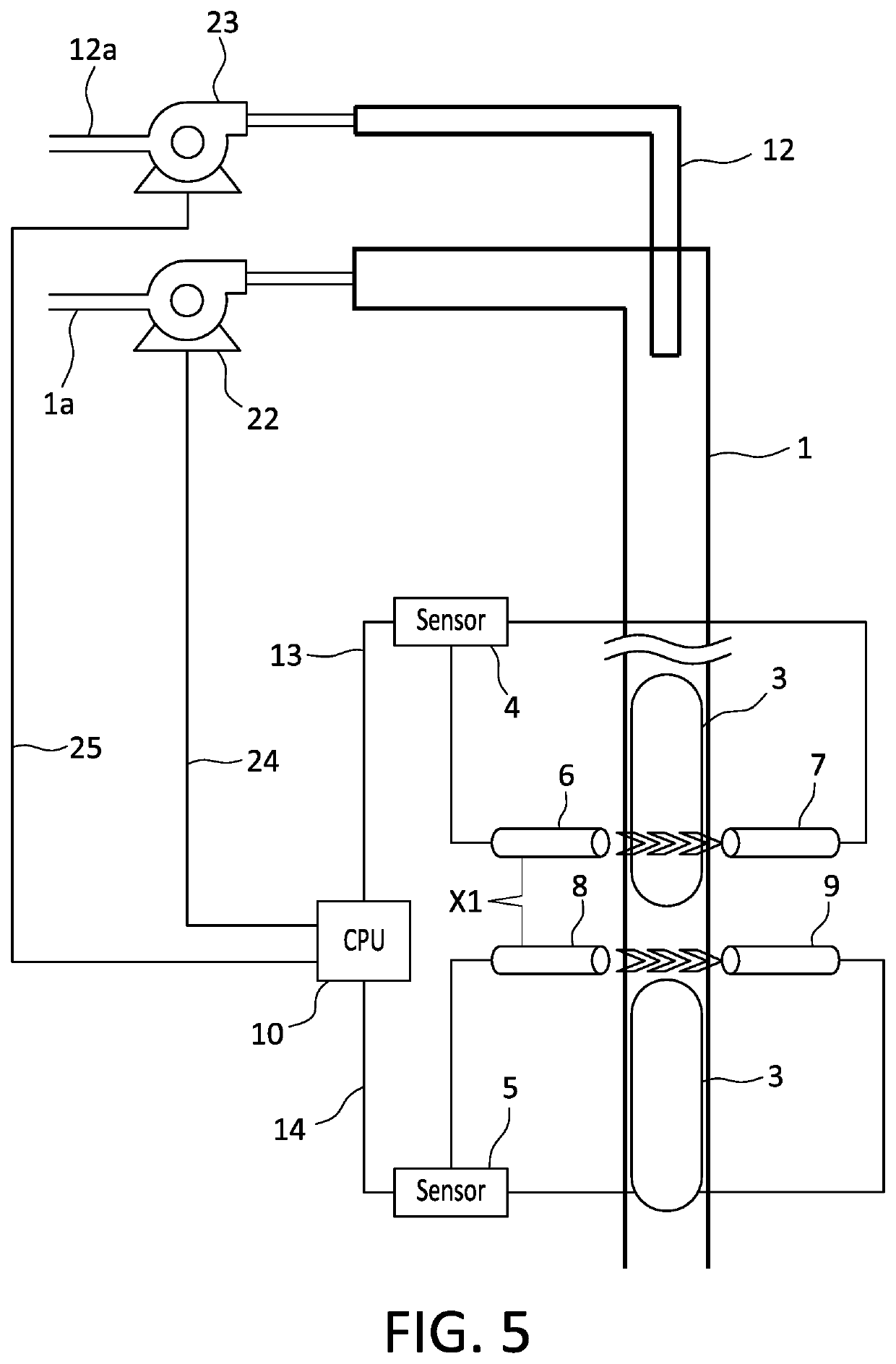System and method for controlling metal oxide gel particle size
- Summary
- Abstract
- Description
- Claims
- Application Information
AI Technical Summary
Benefits of technology
Problems solved by technology
Method used
Image
Examples
example 1
Controlling Gel Particle Diameter by Manipulating Flow Rates
[0060]An acid-deficient uranyl nitrate solution with a concentration of 1.3 M, based on UO2(NO3)2, was prepared. The solution contained 1.7 M urea and 1.7 M HMTA, and had a viscosity of about 1.2 cP. The salt solution was pumped into tube 12 of an apparatus according to FIG. 1 at a temperature of 0° C. to 5° C. The salt solution, or broth, exited tube 12 at a flow rate generally ranging between 0.5 min and 1.5 mL / min, as seen in FIG. 6. The salt solution then enters drive fluid tube 1.
[0061]A drive fluid was pumped into tube 1 of the apparatus of FIG. 1. The drive fluid was silicone oil with a viscosity of 100 cP, at an initial temperature of 0° C. to 5° C. The drive solution flow rate is controlled to maintain a total flow rate generally ranging between 1.3 mL / min and 2.25 mL / min, as seen in FIG. 6. Once the drive fluid and the salt solution enter tube 1, the contents of tube 1 are heated to a temperature of about 56° C., ...
PUM
 Login to View More
Login to View More Abstract
Description
Claims
Application Information
 Login to View More
Login to View More - R&D
- Intellectual Property
- Life Sciences
- Materials
- Tech Scout
- Unparalleled Data Quality
- Higher Quality Content
- 60% Fewer Hallucinations
Browse by: Latest US Patents, China's latest patents, Technical Efficacy Thesaurus, Application Domain, Technology Topic, Popular Technical Reports.
© 2025 PatSnap. All rights reserved.Legal|Privacy policy|Modern Slavery Act Transparency Statement|Sitemap|About US| Contact US: help@patsnap.com



